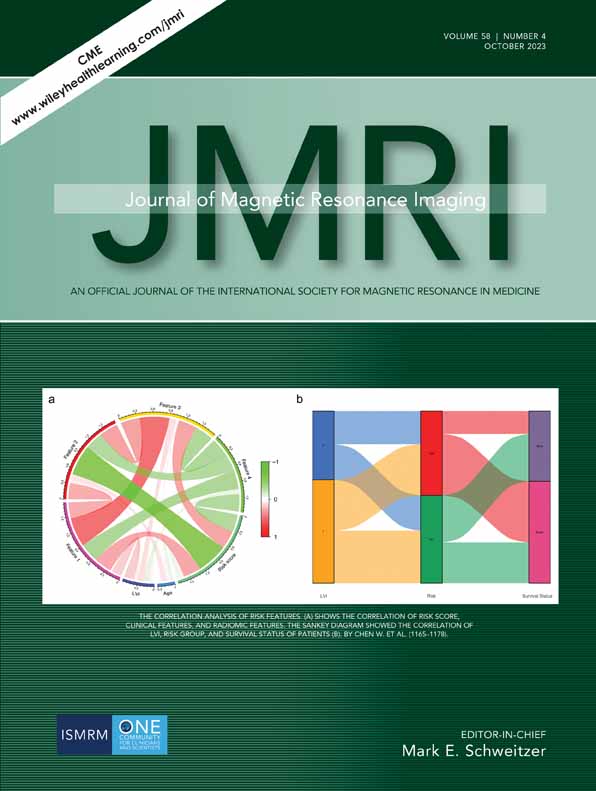Characterizing Streamline Count Invariant Graph Measures of Structural Connectomes
Abstract
Background
While graph measures are used increasingly to characterize human connectomes, uncertainty remains in how to use these metrics in a quantitative and reproducible manner. Specifically, there is a lack of community consensus regarding the number of streamlines needed to generate connectomes.
Purpose
The purpose was to define the relationship between streamline count and graph-measure value, reproducibility, and repeatability.
Study Type
Retrospective analysis of previously prospective study.
Population
Ten healthy subjects, 70% female, aged 25.3 ± 5.9 years.
Field Strength/Sequence
A 3-T, T1-weighted sequences and diffusion-weighted imaging (DWI) with two gradient strengths (b-values = 1200 and 3000 sec/mm2, echo time [TE] = 68 msec, repetition time [TR] = 5.4 seconds, 120 slices, field of view = 188 mm2).
Assessment
A total of 13 graph-theory measures were derived for each subject by generating probabilistic whole-brain tractography from DWI and mapping the structural connectivity to connectomes. The streamline count invariance from changes in mean, repeatability, and reproducibility were derived.
Statistical Tests
Paired t-test with P value <0.05 was used to compare graph-measure means with a reference, intraclass correlation coefficient (ICC) to measure repeatability, and concordance correlation coefficient (CCC) to measure reproducibility.
Results
Modularity and global efficiency converged to their reference mean with ICC > 0.90 and CCC > 0.99. Edge count, small-worldness, randomness, and average betweenness centrality converged to the reference mean, with ICC > 0.90 and CCC > 0.95. Assortativity and average participation coefficient converged with ICC > 0.75 and CCC > 0.90. Density, average node strength, average node degree, characteristic path length, average local efficiency, and average clustering coefficient did not converge, though had ICC > 0.90 and CCC > 0.99. For these measures, alternate definitions that converge a reference mean are provided.
Data Conclusion
Modularity and global efficiency are streamline count invariant for greater than 6 million and 100,000 streamlines, respectively. Density, average node strength, average node degree, characteristic path length, average local efficiency, and average clustering coefficient were strongly dependent on streamline count.
Evidence Level
1.
Technical Efficacy
Stage 1.
Conflict of Interest
The authors declare that they have no conflict of interest.
Open Research
Data Availability Statement
Multi-shell Diffusion MRI Harmonization Challenge 2018 (MUSHAC) is a publicly available dataset. The data acquisition was approved by Cardiff University School of Psychology ethics committee. The code used for this article is available from the corresponding author on reasonable request.




